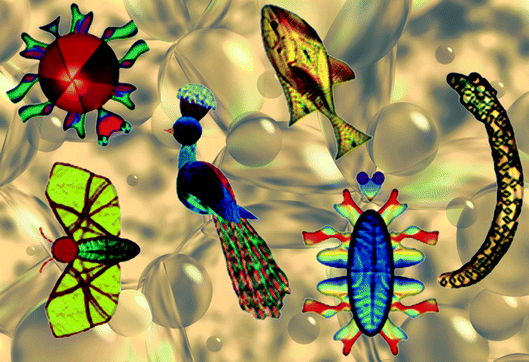Soft matter: more than words
First published on 29th April 2005
Abstract
Pierre-Gilles de Gennes has worked on soft matter for most of his life, and he won the Nobel Prize in Physics in 1991 "for discovering that methods developed for studying order phenomena in simple systems can be generalized to more complex forms of matter, in particular to liquid crystals and polymers". He is regarded as a founding father of soft matter research. Here he gives his opinion on what constitutes soft matter and what the future holds for the soft matter communities.
The French version of soft matter was invented as a joke by Madeleine Veyssié in Orsay around 1970. It was a joke, because ‘matière molle’ has a double meaning in French.
But, progressively, soft matter appeared as a significant concept: comprising all physicochemical systems which have large response functions. A good chemical illustration of this feature is provided by the vulcanisation of rubber. Here, a very diluted additive (sulfur) is enough to switch a system of polymer chains (the latex of the hevea tree) from a liquid to a solid: a rubber.
Another major example is provided by nematic liquid crystals. Here, a modest external field (electric or magnetic) is able to perturb strongly the direction of alignment of long molecules, and thus the optical properties.
These remarkable responses have also been observed in more recent systems. The first class which comes to my mind is tied to ferroelectric smectics C*. These liquid ferroelectrics were invented through a purely theoretical reflection by Meyer.1 They were synthesised a few months later by Keller and coworkers.2 Now there is a full zoo of ferroelectric smectics (see Fig. 1 for examples). Another relatively recent invention is a chemical example. Finkelmann et al.3 (using a clever two step synthesis in a single reaction bath) were able to prepare single domain nematic rubbers. They do show spectacular responses, for instance to mechanical stresses.4
 | ||
| Fig. 1 Members of a “smectic zoo”; artwork courtesy of John Goodby. | ||
The North American community has often used a different phrase to cover soft matter: ‘complex fluids’. I am not a great enthusiast of this choice for various reasons: a) the notion of complexity is fuzzy (I remain somewhat hesitant when faced with symposia on complexity); b) the word complex discourages some young students and c) certain forms of soft matter are not fluid (e.g.: gels and rubbers).
But these byzantine discussions on names are not very important. What matters is a certain unity of concepts, and a certain creativity. It is thus natural that some journals be set up to cover the field. In Europe, the first one was Journal of Physics: E , started by H. Ringsdorf and myself. We now see the birth of Soft Matter, launched by the Royal Society of Chemistry. I am interested in this journal, which has two specific merits: a) it promises to give good coverage of chemistry; b) it is the product of a not-for-profit organisation. My hope for the future is that the soft matter communities can be united and that the journals may lead the way and play an important part in this. In any case, I wish them real success.
P.-G. de Gennes
November 2004
References
- R. B. Meyer, Mol. Cryst. Liq. Cryst., 1975, 40, 33.
- R. B. Meyer, L. Liebert, L. Strzelecki and P. Keller, J. Phys. Lett., 1975, 36, L-69 Search PubMed.
- H. Finkelmann, H. Kock and G. Rehage, Macromol. Rapid Commun., 1981, 2, 317 CrossRef CAS.
- M. Warner and L. Terentiev, Liquid Crystal Elastomers, Clarendon Press, Oxford, 2003 Search PubMed.
| This journal is © The Royal Society of Chemistry 2005 |
